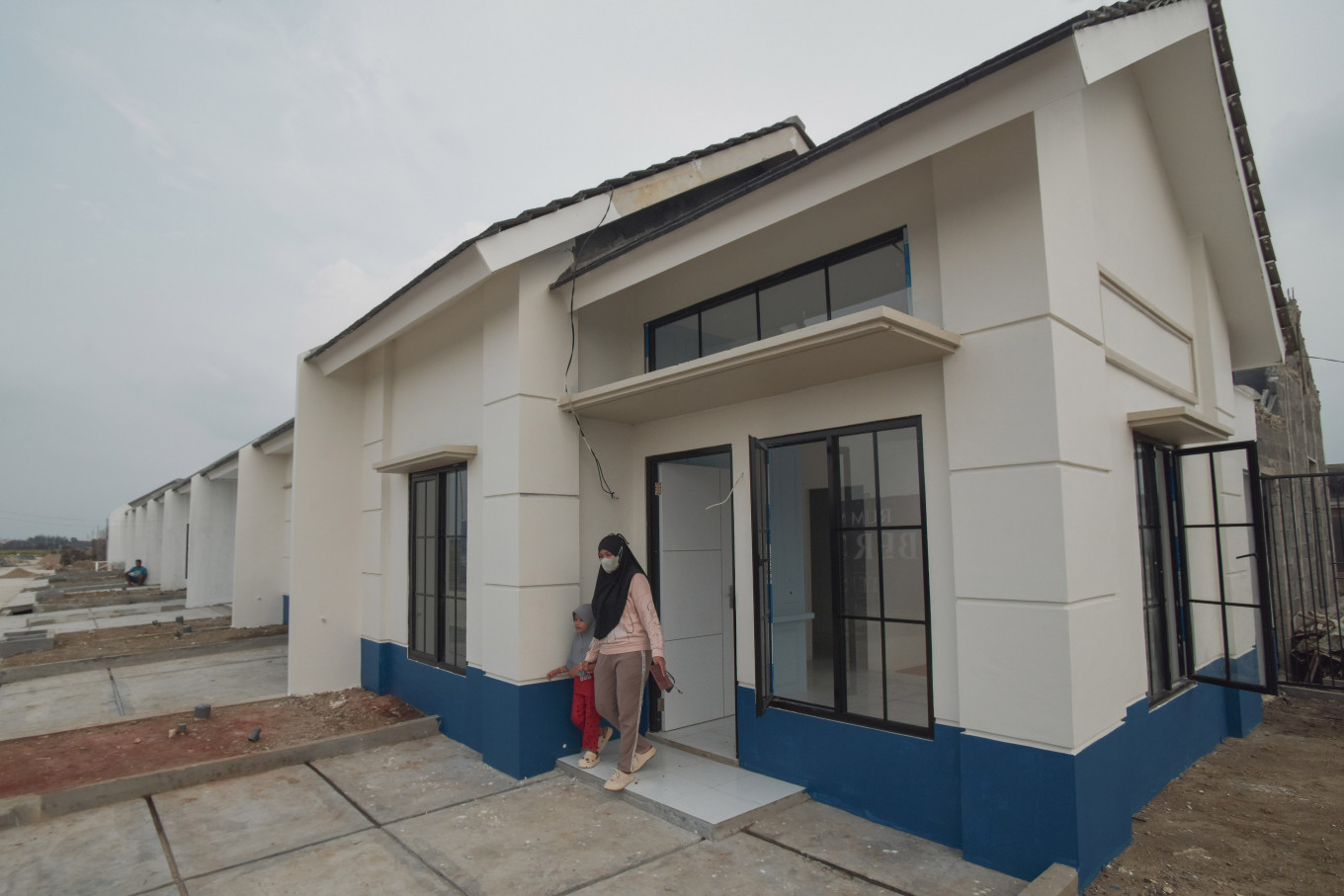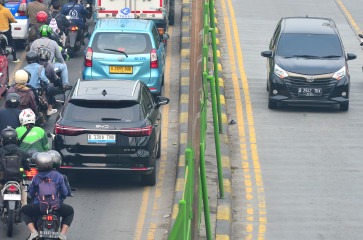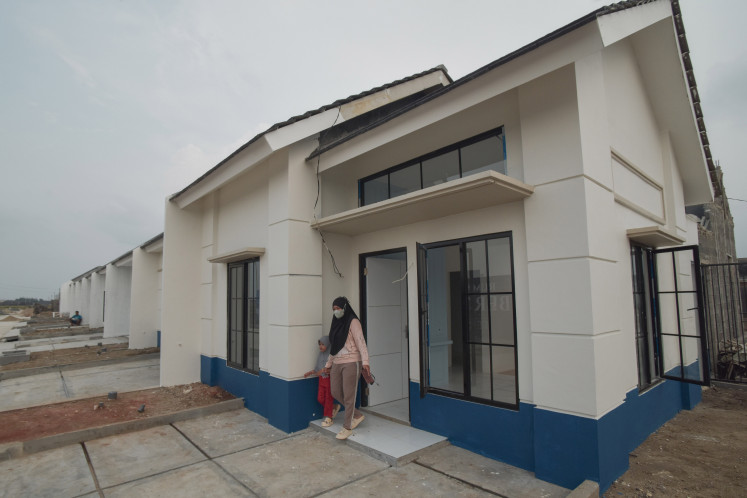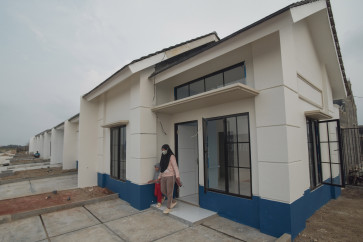Popular Reads
Top Results
Can't find what you're looking for?
View all search resultsPopular Reads
Top Results
Can't find what you're looking for?
View all search resultsThe economics of home: When housing stands on precarious footing
Nearly four in every 10 Indonesian families now live on the edge of housing precarity, revealing a social architecture whose stability is far more fragile than our macroeconomic headlines suggest.
Change text size
Gift Premium Articles
to Anyone
 A woman and her child walk past subsidized housing for media industry workers on June 5, 2025 at Gran Harmoni Cibitung residential complex, Bekasi regency, West Java. The government has prepared 1,000 subsidized homes in the first phase for media industry workers across Indonesia under the Mortgage Financing Liquidity Facility (FLPP) scheme. (Antara/ Fakhri Hermansyah)
A woman and her child walk past subsidized housing for media industry workers on June 5, 2025 at Gran Harmoni Cibitung residential complex, Bekasi regency, West Java. The government has prepared 1,000 subsidized homes in the first phase for media industry workers across Indonesia under the Mortgage Financing Liquidity Facility (FLPP) scheme. (Antara/ Fakhri Hermansyah)
I
ndonesia stands at a paradoxical crossroads. On one hand, the nation points to steady macroeconomic resilience, on the other, millions of families live in the shadow of a silent crisis that threatens the very foundation of our development narrative.
The contrast is stark: a country praised for its stability is still grappling with a level of housing vulnerability that undermines the confidence those economic indicators are meant to project.
Economic narratives often underscore stable growth, controlled inflation and steady investment flows. Yet, beneath these aggregated achievements lies a domestic reality where a significant share of families lacks the most basic anchor of security: a dignified, permanent home fit to sustain daily life.
According to Housing and Settlements ministry data as of October 2025, 12.57 million families still do not own a home, and another 16.59 million live in houses unfit for human habitation. Based on the 75.65 million total families recorded by the National Population and Family Planning Board (BKKBN), this means 16.6 percent have no home and 21.9 percent live in substandard housing. In other words, nearly four in every 10 Indonesian families now live on the edge of housing precarity.
Placed against the backdrop of Indonesia’s demographic scale, these proportions reveal a social architecture whose stability is far more fragile than our macroeconomic headlines suggest. While the economy expands, the foundations meant to support its people remain uneven, exposing a disconnect that cannot be bridged through growth statistics alone.
This reflects a structural fault line. Housing conditions determine far more than shelter; they shape mobility, well-being, workforce participation and intergenerational opportunity. When a substantial portion of families struggle to secure a safe and adequate home, the nation carries a hidden burden that eventually manifests in productivity constraints and a fraying sense of inclusion.
The government’s Housing Finance Liquidity Facility (FLPP) program deserves recognition. Over six years, over 1.05 million families have secured a decent home, a measurable commitment to expanding access. Yet, the scale of the challenge eclipses this achievement. The FLPP currently addresses only 8.37 percent of the homeownership backlog and just 6.34 percent of the uninhabitable housing backlog.


















